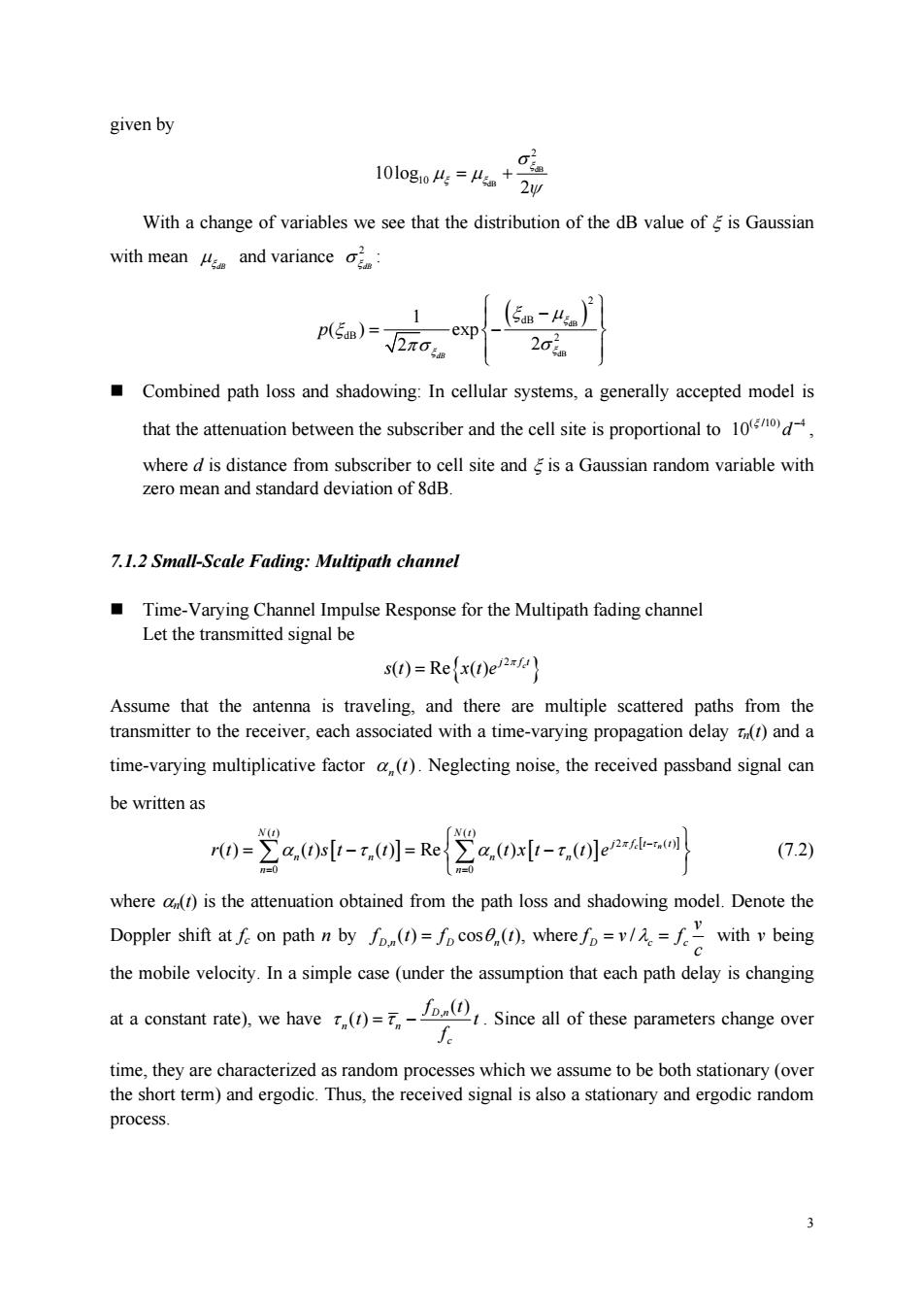正在加载图片...

given by 0a从-儿+ With a change of variables we see that the distribution of the dB value of is Gaussian with mean and variance 1 pl5=2π0 -exp (5-4 Combined path loss and shadowing:In cellular systems,a generally accepted model is that the attenuation between the subscriber and the cell site is proportional to1 where d is distance from subscriber to cell site andis a Gaussian random variable with zero mean and standard deviation of 8dB. 7.1.2 Small-Scale Fading:Multipath channel Time-Varying Channel Impulse Response for the Multipath fading channel Let the transmitted signal be s(t)=Re(x(t)e Assume that the antenna is traveling.and there are multiple scattered paths from the transmitter to the receiver,each associated with a time-varying propagation delay()and a time-varying multiplicative factor (t).Neglecting noise,the received passband signal can be written as =。 ()st-r.(]-Re(-r.( (7.2) where)is the attenuation obtained from the path loss and shadowing model.Denote the Doppler shift at fe on path n by o ()=fcos,(t),where==with y being the mobile velocity.In a simple case(under the assumption that each path delay is changing ataconstant rate),we have(Since all of these parameters change over time,theyare characterized asrandom proces sses which we assume to be both stationary (ove the short term)and ergodic.Thus,the received signal is also a stationary and ergodic random process. 3 given by dB dB 2 10 10log 2 With a change of variables we see that the distribution of the dB value of is Gaussian with mean dB and variance 2 dB : dB dB 2 dB dB 2 1 ( ) exp 2 2 dB p Combined path loss and shadowing: In cellular systems, a generally accepted model is that the attenuation between the subscriber and the cell site is proportional to ( /10) 4 10 d , where d is distance from subscriber to cell site and is a Gaussian random variable with zero mean and standard deviation of 8dB. 7.1.2 Small-Scale Fading: Multipath channel Time-Varying Channel Impulse Response for the Multipath fading channel Let the transmitted signal be 2 ( ) Re ( ) c j ft st xte Assume that the antenna is traveling, and there are multiple scattered paths from the transmitter to the receiver, each associated with a time-varying propagation delay n(t) and a time-varying multiplicative factor ( ) n t . Neglecting noise, the received passband signal can be written as () () 2 () 0 0 ( ) ( ) ( ) Re ( ) ( ) c n Nt Nt j ft t nn n n n n rt tst t txt t e (7.2) where n(t) is the attenuation obtained from the path loss and shadowing model. Denote the Doppler shift at fc on path n by , ( ) cos ( ), where / Dn D n D c c v f tf t fv f c with v being the mobile velocity. In a simple case (under the assumption that each path delay is changing at a constant rate), we have , ( ) ( ) D n n n c f t t t f . Since all of these parameters change over time, they are characterized as random processes which we assume to be both stationary (over the short term) and ergodic. Thus, the received signal is also a stationary and ergodic random process